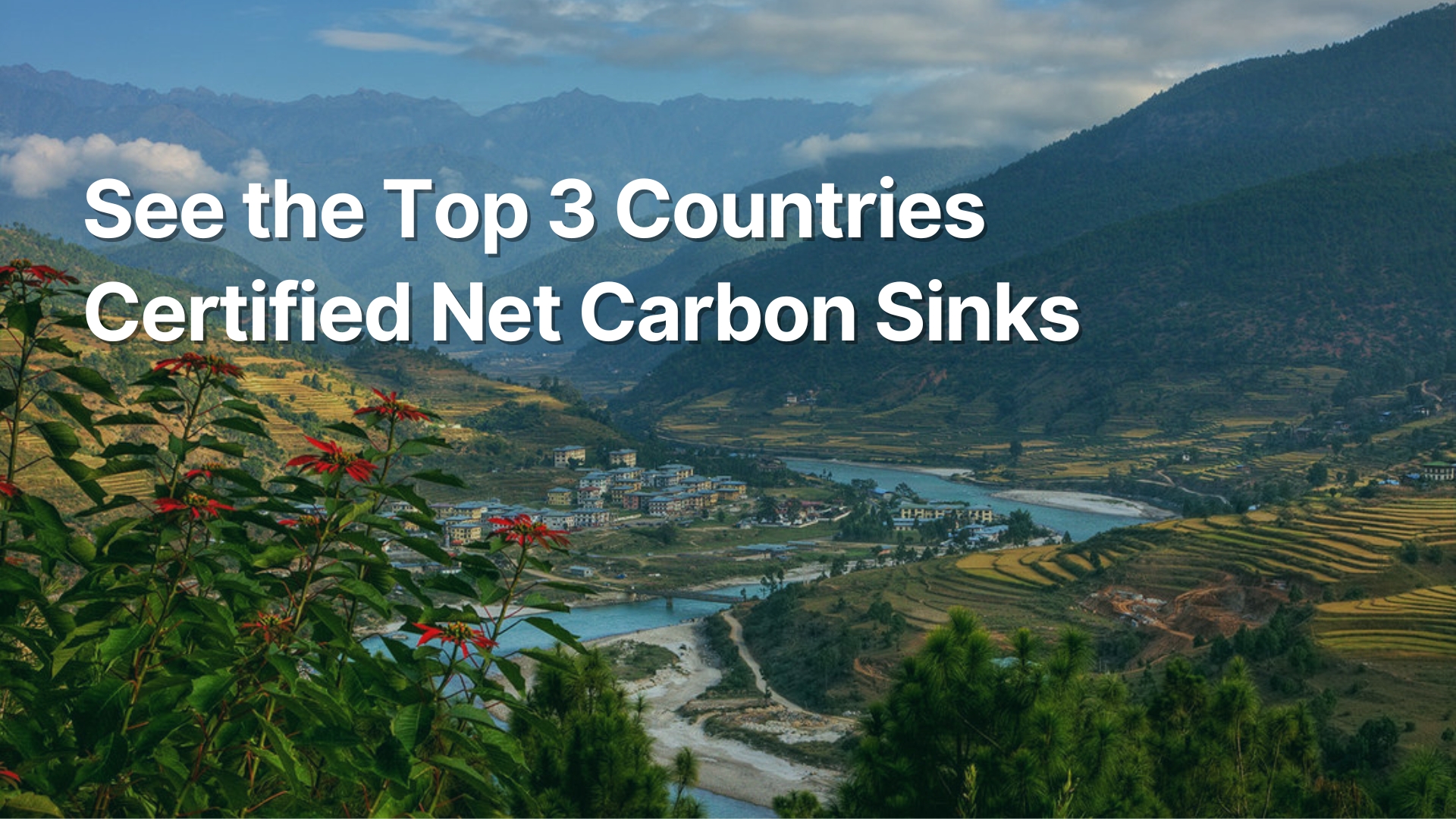3 Countries That Are Certified Net Carbon Sinks
Science

While most nations are working toward net-zero emissions by 2050, a few have already achieved something even more ambitious: becoming net carbon sinks. These countries remove more carbon from the atmosphere than they emit. In 2021, Bhutan, Suriname, and Panama formed the “carbon negative alliance”—a coalition of countries committed to maintaining their carbon-negative status.
Bhutan
Located in the eastern Himalayas, Bhutan is widely recognized as the first carbon-negative country. Rather than focusing on gross domestic product (GDP), Bhutan pioneered the concept of Gross National Happiness (GNH), prioritizing citizens’ well-being and environmental preservation.
More than 70% of Bhutan’s land is covered by forest, which sequesters an estimated 9 million tons of carbon annually—while its national emissions are under 4 million tons. Bhutan’s constitution mandates that at least 60% of its territory must remain forested. In addition, most of Bhutan’s electricity is sourced from hydropower, with surplus energy exported to neighboring countries.
Suriname
Suriname is the most forested country on Earth, with 97% of its land area covered in forest. These forests absorb roughly 8.8 million tons of carbon annually, while national emissions stand at 7 million tons.
The government has pledged to keep 93% of its land forested and has implemented REDD+ (Reducing Emissions from Deforestation and Forest Degradation) projects that have helped avoid an additional 4.8 million tons of CO₂ emissions. Suriname has also committed to generating 25% of its energy from renewable sources by 2025.
Panama
Panama, located at the crossroads of North and South America, has 57% of its territory under tree cover. In 2023, Panama’s forests absorbed an estimated 23.4 million tons of carbon, while its emissions totaled just 14 million tons.
The country plans to restore 50,000 hectares of forest by 2050. Hydropower already accounts for 60% of Panama’s electricity generation as of 2024, with wind contributing 5% and solar photovoltaic (PV) contributing 7.8%. The government has committed to meeting 70% of energy demand through renewables by 2050.
Who Might Join Next?
Other countries reportedly on track to join the carbon-negative alliance include Comoros, Gabon, Guyana, Madagascar, and Niue. As global attention turns to nature-based climate solutions, these countries could serve as models of environmental leadership.
Want to expand your knowledge on decarbonization and carbon market topics? Don’t miss our weekly articles on Insights page and follow our LinkedIn to stay updated 🌳
References:
DISCOVER SURINAME. (2025). Suriname is a Carbon Negative Country. Discover-Suriname.com.
Global Forest Watch. (2023). Panama Deforestation Rates & Statistics.
Goering, L. (2021). Forget net-zero: meet the small-nation, carbon-negative club. Reuters.
Ini, L. (2025). Panama installs 143.4 MW of new solar in 2024. PV Magazine.
Othering and Belonging Institute. (2020). Suriname Case Study. UC Berkeley.
Ritchie, H., & Roser, M. (2020). CO2 and Greenhouse Gas Emissions. Our World in Data.
Vives, G. T., Tashi, S., & Singey, J. (2023). Bhutan’s journey into carbon markets. World Bank Blogs.
Wood, J. (2022). These 8 countries have already achieved net-zero emissions. World Economic Forum.
World Economic Forum. (2022). Why These 3 Countries Are Certified Carbon-Negative.

